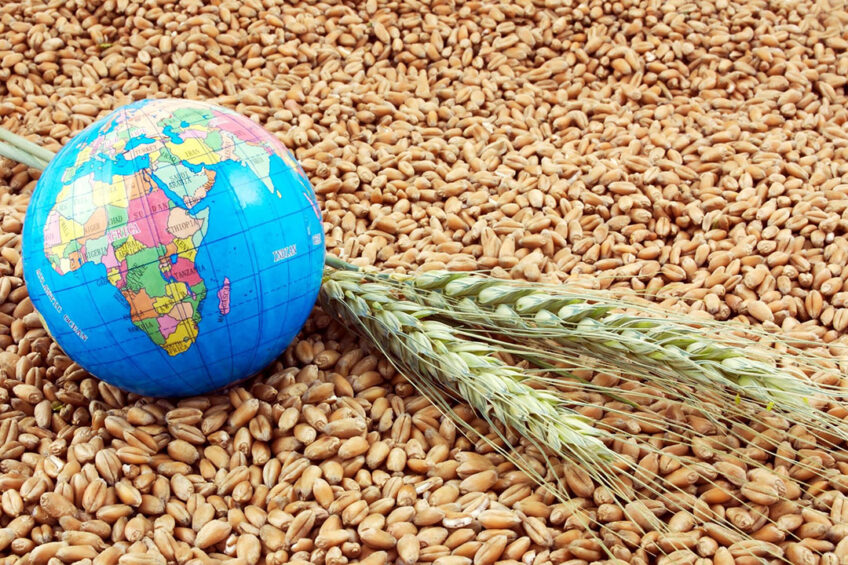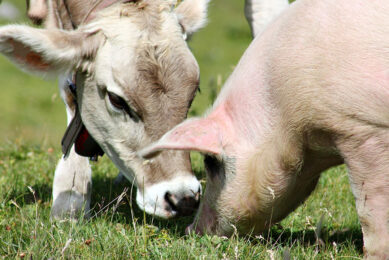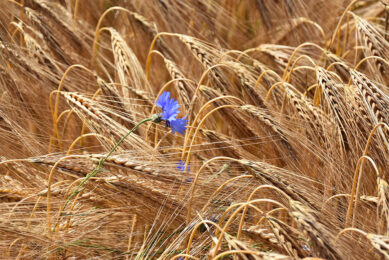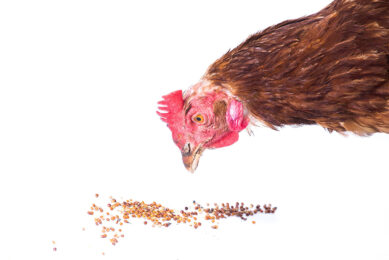World feed production increases to over 1.2 billion tons

Taking data from 140 countries and over 28,000 feed mills, Alltech has released its 11th annual feed production survey giving an insight into global feed production.
Based on the data, it is estimated that international feed tonnage has increased by 2.3%, to 1.235 billion metric tons of feed produced in 2021.
We see the resilience of the agri-food sector against the challenges of Covid-19, disease and supply chain disruption, and, even more importantly, there is evidence of growth, modernization and the adoption of more sustainable practices occurring in parallel
The top 10 feed-producing countries over the past year were:
- China (261.424 mmt),
- the US (231.538 mmt),
- Brazil (80.094 mmt),
- India (44.059 mmt),
- Mexico (38.857 mmt),
- Spain (35.580 mmt),
- Russia (33.000 mmt),
- Turkey (25.300 mmt),
- Japan (24.797 mmt) and
- Germany (24.506 mmt).
Collectively these countries produced 65% of the world’s feed production, and saw their tonnage increase by 4.4%, compared to the overall global growth of 2.3%.
SECTOR DRIVERS
China: Highest increase in feed production
China increased its animal feed production by the highest percentage (8.9%) compared to all other countries during 2021 with a final tally of 261.424 million metric tons. This increase is a result of the continued consolidation and modernisation of the country’s feed industry. Swine farms and feed production have moved from utilising food waste to contracting with professional feed mills.
Global feed production
Feed production met local expectations in about half of the surveyed countries while falling short of expectations in about 25% of countries.
Layer feed production fell while broiler feed rose
The poultry sector experienced a slight reduction in layer feed tonnage (down 1.4%), whereas broiler feed production increased by 2.3%. The layer business has been facing challenges in many countries due to the high costs of raw materials, combined with flat/low retail prices for eggs. Animal welfare concerns are also a driver, as cage-free and free-range production are on the rise in many countries. In Europe, the most significant decreases occurred in Norway, Russia, Ukraine and Poland. Asia-Pacific also saw a decrease, while tonnage in Australia grew by 4%.
Pig feed production increased significantly
The 6.6% increase in pig feed production was primarily boosted by Asia-Pacific’s recovery from ASF. Japan, South Korea, Malaysia and China demonstrated just such a recovery from ASF, but Indonesia, Myanmar, the Philippines, Thailand and Vietnam continued to feel the impact of the disease. In Europe, countries where ASF is not or is no longer a problem were still impacted by a pork surplus due to a reduced demand from China.
Dairy feed tonnage increased slightly, by 1.9%
Asia-Pacific saw the biggest increase, which is mostly attributed to growth in India. As Covid-19 lockdowns eased around the world, the reopening of the hospitality industry and in-person classroom education helped boost milk consumption overall. In Australia and New Zealand, dairy feed tonnages were down 6.7% and 2.5%, respectively.
Beef feed production shrunk by 1.9% globally
The industry continues to be challenged by GHG regulations and perceptions of environmental and health impacts. European markets are especially focused on reducing GHG emissions in an effort to align with COP26, the EU Green Deal and the FEFAC Feed Sustainability Charter 2030. The US experienced an increased steer and heifer harvest due to carryover from 2020, as well as a record demand for beef exports. Argentina saw a significant reduction due to reduced exports, and high inflation and the devaluation of the local currency are also affecting Argentinians’ purchasing power, although export regulations are easing and could impact Argentina’s outlook for 2022.
Aquaculture: Continues to grow
Meanwhile, the aquaculture industry continues to grow in many markets and increased by an impressive 3.7%. Recirculating aquaculture systems (RAS) are becoming more prevalent, and consumer demand for fish is on the rise.
ASF challenges
Markets with ASF challenges saw additional growth due to their reduced pork supply. India saw a significant increase in its aquaculture feed tonnage of 9%; additionally, Indonesia accounted for 10% of Asia-Pacific’s growth. In Latin America, Chile, Brazil, Honduras and Ecuador contributed to the regional growth of 5.6%.
Pet food sector: Highest increase
Pet feed production had the highest increase among the sectors, with an 8.2% rise in production. This significant increase is largely due to the rise in pet ownership amid the Covid-19 pandemic. While some regions remained flat, there were no reported decreases in any region around the world.
REGIONAL GROWTHS
North America: Steady growth
Over the last year North America saw steady growth of 1.9%. The US remained the second-largest feed-producing country globally, behind China.
Latin America: Moderate growth
Latin America experienced moderate growth of 0.5%. Brazil remained the leader in feed production for the region and ranked third overall globally.
Europe: Decrease in feed production
Europe saw a decrease of 1.2% in its feed production due to issues such as ASF and high raw material costs, combined with low end-product prices, declines in ruminant feed production and Covid-19 related government regulations.
Asia-Pacific: Largest regional growth
Asia-Pacific saw the largest regional growth of 5.7% and is home to several of the top 10 feed-producing countries, including China, India and Japan.
Africa: Growth despite challenges
Africa saw growth of 2.4%, despite challenges caused by high raw material prices, foot and mouth disease and geopolitical tensions that have impacted the exports of foods of animal origin and caused raw material shortages in some areas.
Optimism for the future of the agri-food sector
Dr Mark Lyons, president and CEO of Alltech, said: “The results within our 2022 Alltech Agri-Food Outlook reinforce our confidence and optimism about the future of the agri-food sector.
“We see the resilience of the agri-food sector against the challenges of Covid-19, disease and supply chain disruption, and, even more importantly, there is evidence of growth, modernization and the adoption of more sustainable practices occurring in parallel.”











